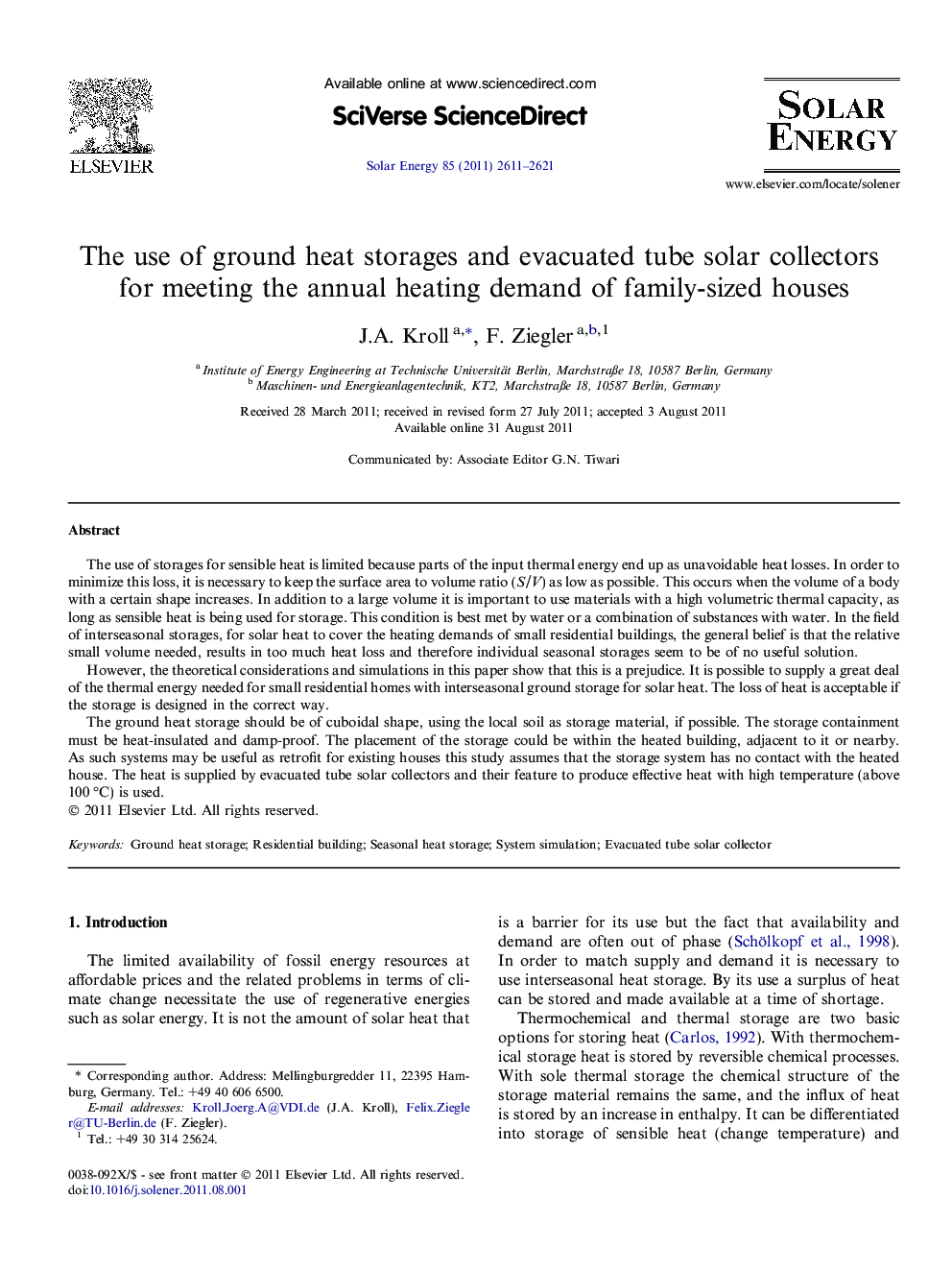| Article ID | Journal | Published Year | Pages | File Type |
|---|---|---|---|---|
| 1551122 | Solar Energy | 2011 | 11 Pages |
The use of storages for sensible heat is limited because parts of the input thermal energy end up as unavoidable heat losses. In order to minimize this loss, it is necessary to keep the surface area to volume ratio (S/V) as low as possible. This occurs when the volume of a body with a certain shape increases. In addition to a large volume it is important to use materials with a high volumetric thermal capacity, as long as sensible heat is being used for storage. This condition is best met by water or a combination of substances with water. In the field of interseasonal storages, for solar heat to cover the heating demands of small residential buildings, the general belief is that the relative small volume needed, results in too much heat loss and therefore individual seasonal storages seem to be of no useful solution.However, the theoretical considerations and simulations in this paper show that this is a prejudice. It is possible to supply a great deal of the thermal energy needed for small residential homes with interseasonal ground storage for solar heat. The loss of heat is acceptable if the storage is designed in the correct way.The ground heat storage should be of cuboidal shape, using the local soil as storage material, if possible. The storage containment must be heat-insulated and damp-proof. The placement of the storage could be within the heated building, adjacent to it or nearby. As such systems may be useful as retrofit for existing houses this study assumes that the storage system has no contact with the heated house. The heat is supplied by evacuated tube solar collectors and their feature to produce effective heat with high temperature (above 100 °C) is used.
► System to simulate small seasonal ground storages for sensible heat. ► Use of evacuated tube solar collectors leads to storage temperatures above 100 °C. ► Coverage of a great part of the heat demand of a family-sized home. ► Achievable benefits are comparable to those from great seasonal storages.
